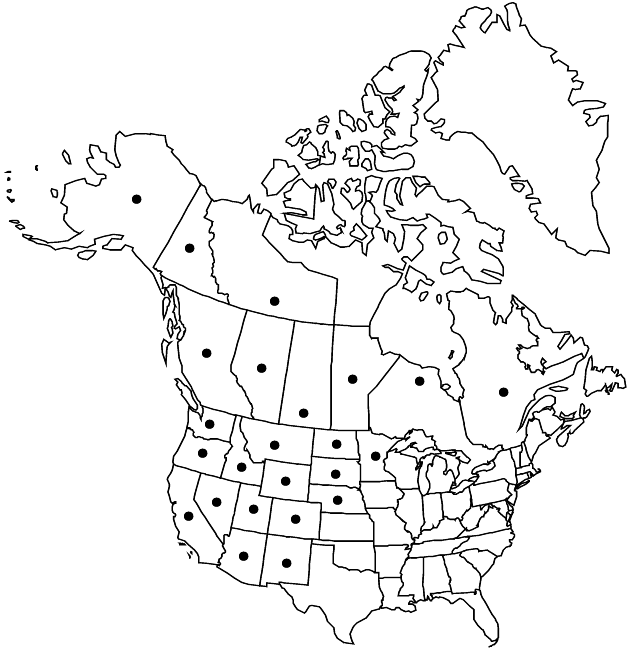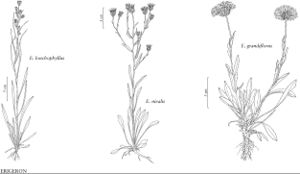Erigeron lonchophyllus
Fl. Bor.-Amer. 2: 18. 1834.
Biennials or short-lived perennials (sometimes appearing annual), 2–45 (–60) cm; fibrous-rooted, caudices simple. Stems erect or basally ascending, sparsely to densely hirsute, eglandular. Leaves basal (persistent) and cauline; basal blades oblanceolate to spatulate, 13–80 (–150) × 1.5–5 (–12) mm, margins entire, usually spreading ciliate, faces sparsely to moderately hirsute to glabrate, eglandular; cauline mostly linear (sometimes longer than basal, usually erect or nearly so). Heads 1 or 3–12 usually in loosely racemiform arrays (from erect peduncles distal to midstems, sometimes on proximal 1/3). Involucres 4–9 × 7–17 mm. Phyllaries in 2–3 series (inner apices acute to acuminate), hirsute to strigoso-hirsute, eglandular. Ray (pistillate) florets 70–130 (in 1 series); corollas white to light pink, 2–3 mm, laminae (filiform) erect, not coiling or reflexing (not surpassing involucres). Disc corollas 3–5 mm. Cypselae 1.3–1.8 mm, 2-nerved, faces sparsely strigose; pappi: outer of setae, inner of 20–30 (non accrescent) bristles. 2n = 18.
Phenology: Flowering (Jun–)Jul–Aug(–Sep).
Habitat: Moist edges of streams, bogs, ponds, moist tundra, hummocks in meadows, ditch banks, gravelly places, along roads
Elevation: (900–)1400–3600 m
Distribution

Alta., B.C., Man., N.W.T., Ont., Que., Sask., Yukon, Alaska, Ariz., Calif., Colo., Idaho, Minn., Mont., Nebr., Nev., N.Mex., N.Dak., Oreg., S.Dak., Utah, Wash., Wyo.
Discussion
Selected References
None.
